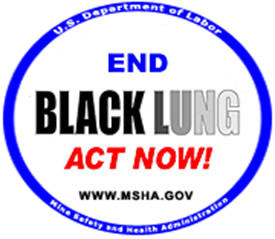MSHA Chief Says Black Lung is “Widespread and Underreported”

In a recent statement, the head of the federal Mine Safety and Health Administration (MSHA), Joe Main, said that black lung is “widespread and underreported.“
Main made his statement on November 20, 2015, the 47th Anniversary of the Farmington mine disaster which led to the passage of the Federal Mine Health and Safety Act of 1969. The ’69 Coal Act was the first federal law to limit dust conditions underground and also created the federal black lung benefits system.
Main contrasted the progress that has been made since 1969 in reducing mine accidents with the work that still remains to be done in reducing black lung disease.
According to Main, since the Farmington disaster, 76,000 American miners have died from black lung and “[s]ince the late 1990s, the percentage of miners identified with black lung has increased from 5 to 10 percent among long-tenured workers.”
Main attributed much of the problem to underreporting by the industry:
“Of the 29 miners killed at the Upper Big Branch (UBB) Mine in April 2010, 17 of 24 that could be examined had evidence of black lung, and five of the 17 had fewer than 10 years of coal mining experience. However records indicate that the UBB mine reported only one case of the disease to MSHA since 2010.“
Main also drew on statistics from claims for federal black lung benefits, claims for state workers’ compensation, and NIOSH’s surveillance efforts to show that the industry is failing to self-report disease. (Note the numbers below incorporate more precise numbers that appeared in a story in the Lexington Herald-Leader.)
- Since 2010, nearly 34,000 claims for black lung benefits were filed and 14,799 of these were the first claim that the miner or widow filed. During the same period, 3,700 miners from 20 states were awarded workers’ compensation. However, during this period, the industry only self-reported 701 cases from 9 states to MSHA.
- In Kentucky, the industry reported 112 cases of black lung to MSHA, but 1,442 miners were awarded workers’ compensation and 4,800 miners filed for black lung benefits for the first time.
- NIOSH’s surveillance program identified black lung in 488 miners in 18 different states, while the industry only reported disease in 9 states.
- NIOSH identified 47 miners with black lung in Illinois and Indiana, but the industry only reported 1 miner.
Main also said that MSHA has “found evidence of the failure mine operators not using effective (or adequate) dust controls during these surprise inspections, indicating that many mines may not have been protecting miners from the disease when MSHA was not present or when dust sampling devices was taking place.“
Main concluded saying, “These new provisions of the Dust Rule, along with protections already in place that close sampling loopholes, will help fulfill the Farmington legacy and the promise Congress made to miners in the Coal Act to rid the coal mining industry of a terrible disease and protect our nation’s coal miners. Miners deserve no less!”
A story by Bill Estep in the Lexington Herald-Leader, quoted the Director of Appalachian Citizens’ Law Center (which publishes this blog) explaining how dust fraud also contributes to black lung.
Stephen A. Sanders, director of the Appalachian Citizens’ Law Center in Whitesburg, told a congressional subcommittee last month that miners have often told him about cheating that occurred on dust sampling, with companies placing dust monitors in the fresh-air intake, rather than at the working face where machines can kick out clouds of dust.
“Miners tell me all the time that the dust was thick in the mine where they worked,” said Sanders, who represents miners in black-lung cases.